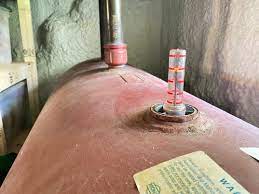Oil burners are a critical part of many heating systems. They’re responsible for providing your home with hot water, warm air, and a comfortable living environment. However, with constant use, they can experience wear and tear, leading to malfunctions and inefficiencies. If you’re planning to install an oil burner pipe or want to maintain your current oil burner, then you’ve come to the right place! In this article, we’ll provide you with a comprehensive guide to installing and maintaining oil burner pipe.
1. Oil Burner Pipe Installation
Installing an oil burner pipe requires precision, safety measures, and attention to detail. It’s an intricate process that involves multiple steps. The first step in installing an oil burner pipe is to ensure that the area where the oil burner will be installed is clean and debris-free. Next, you should carefully read the manufacturer’s instructions and follow them to the T. You’ll likely need to adjust the pipe’s fittings, attach the nozzle, prime the oil pump, fill the oil tank, and test the oil burner. If you’re not confident in doing this, it’s advisable to call a professional.
2. Maintaining Your Oil Burner Pipe
Maintaining your oil burner pipe requires regular cleaning and servicing. A dirty oil burner can lead to inefficiencies, emissions, and even dangerous fumes. It’s recommended to have your oil burner serviced at least once a year by a qualified technician. However, you can also maintain it yourself. Start by shutting off the power source and removing the burner assembly. Then, carefully clean the burner assembly using a soft brush, lubricate the motor, check for any damage, and reassemble the parts.
3. Oil Burner Pipe Troubleshooting
Malfunctions and issues with your oil burner pipe can range from simple to complex. Some common issues include a lack of heat, strange odors, reduced efficiency, or oil leaks. Before attempting to troubleshoot on your own, always ensure that safety measures are taken, such as shutting off the power source, extinguishing any flames, and wearing protective gloves. Beginner troubleshooting tips include checking for clogs in the oil filter, air vents, or fan, ensuring the oil tank is filled, and the thermostat is turned on.
4. Oil Burner Pipe Efficiency Improvement
The efficiency of an oil burner pipe is crucial for saving energy and getting the best out of your heating system. You can improve efficiency by performing regular maintenance, such as cleaning the filter, avoiding using low-quality oil, and upgrading your thermostat to a programmable one. Additionally, you can insulate the piping system and boiler to retain heat better and reduce energy wastage.
5. Oil Burner Pipe Replacement
Sometimes, maintaining your oil burner pipe is no longer viable, and replacement is necessary. Factors that could lead to this include consistent malfunctions, outdated parts, and higher energy bills. When replacing your oil burner pipe, ensure you invest in a high-quality one that’s energy-efficient, durable, and suits your heating needs.
Installing and maintaining an oil burner pipe may seem daunting, but with the right knowledge and tools, it can be a breeze. By following our comprehensive guide, you can ensure that your oil burner pipe remains efficient, safe, and reliable. And when in doubt, always seek the help of a professional to avoid any potential risks. So go ahead, enjoy your warmth and comfort, and make the most of your heating system!


